
What will returning to indoor walls be like? Natalie Berry explores how indoor climbing walls are responding internationally as the world attempts to learn to live with COVID-19 and get back to some form of normality.
Two months and what feels like several worlds ago on 10 March, UKC published an article in which we ummed and ahed about the hygiene issues and viral transmission possibilities that climbing walls present. Little did we know back then that within the space of a fortnight, our concerns would be taken out of our - very washed, very clean - hands. Virologist Dr Levi Yant contacted us following publication, urging people to avoid climbing walls while the UK government struggled to get to grips with the COVID-19 crisis and the WHO upgraded the disease to pandemic status. On 23 March, Boris Johnson ordered the closure of leisure facilities and placed the UK under lockdown. In the meantime, many walls had already made the difficult decision to shut their doors to customers. As countries now look to re-open workplaces and public spaces, sports and leisure facilities face particular challenges.
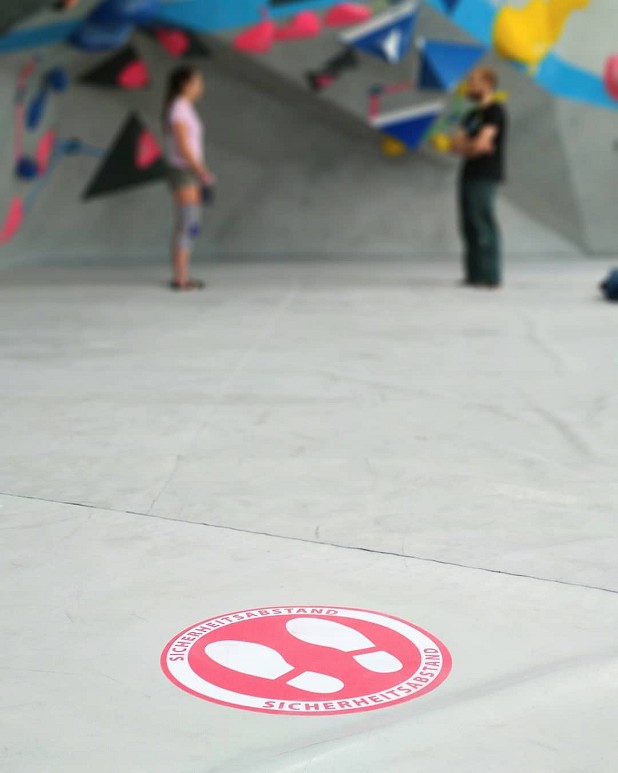
It's obvious that close proximity to others in a social or paired activity, along with high-contact surfaces in the form of hand and foot holds and a dusty atmosphere, all make indoor climbing a tricky environment for maintaining hygiene and reducing transmission between asymptomatic carriers. During lockdown, climbing wall owners, associations and newly-formed international working groups from around the world have been cooperating to establish new best practice guidelines following the first wave of COVID-19.
For many countries, the green light for reopening will hinge on a date set by their government or local authorities relating to the broad category of sports and leisure facilities, which can be further differentiated by indoor/outdoor settings. In the Netherlands, for example, it has been categorically announced that indoor leisure facilities cannot open until 1 September, whereas in the UK, Boris Johnson's COVID-19 recovery strategy is less firm, but suggests that by 'Step 3' - implemented 'at the earliest by July' - there may be partial re-opening of the hospitality industry and leisure facilities, science and numbers permitting.
In recent weeks, some walls in Europe and the USA have opened up tentatively, but with strict new protocols in place for staff and customers. Limits on the number of customers in the building and allocated time slots, an absence of groups and parties, increased emphasis on personal and workplace hygiene and social distancing measures mean that a return to indoor climbing has become possible in some countries, but it's scaled-down, cleaner and quite different to walls as we once knew them. Despite being desperate to re-open, businesses are being forced to balance the economics of phased re-opening with restricted footfall.
'With all income stopped except from the kindness of individuals who have continued to pay their memberships, the close down has been really tough on climbing walls,' Rich Emerson, Chair of the Association of British Climbing Walls (ABC) says. Climbing centres generally pay high monthly overheads on top of staff wages, including rent for facility use, insurance payments and utilities.
'Whilst the rates holiday, grants and furlough have been a big help, we all still have money going out,' Rich continues. 'Some will have been able to negotiate their rents to stop, others will be paying a percentage of their rent. We all have insurance to pay and standing charges and despite furlough will be paying some staff. Many walls will have finance and they may have got some leniency on repayments, but many will not have been able to stop all repayments and virtually all will be paying the interest on their finance. We're burning through the cash we had at the start and we will need to rebuild that cash - and more probably.'
This leads to the key question: are (healthy) customers willing to return to public exercise facilities after being confined for two months? Although walls are community hubs and the sole fitness outlet for many, the prospect of social contact in the context of an exercise space - with the breathing, body fluids and surface contact that go with it - could prove daunting for some.
'We simply don't know how busy walls will be when we reopen,' Rich comments. 'A Vertical Life survey said that 95% of users will come back, but that is a self-selecting group of keen climbers. Whilst that's great news, it's not the full picture.'
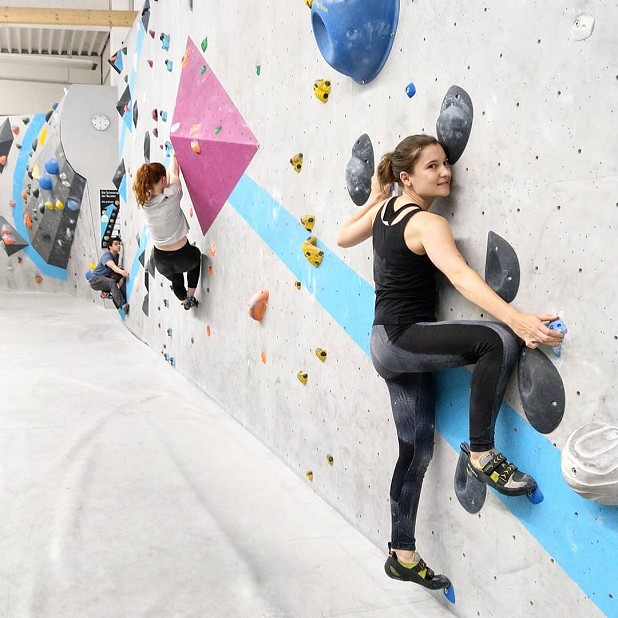
For people living with at-risk family members, the decision to return to climbing walls is less straightforward. 'I am feeling anxious about returning to indoor walls, not so much for my own health but for that of my wife,' keen wall-goer Dan Kyte admits. 'Should I bring anything back it would affect her a lot more. Personally I'll stay out of the climbing walls for quite some time even if they do re-open. It's tricky though, as I would like to support the walls for the livelihood of their staff.'
Given that climbing walls typically run on very small margins and rely on high footfall and side enterprises such as cafés and kids' play areas, the COVID-19 shutdown and phased re-opening pose a real threat to the industry. The current impracticalities of, and hence restrictions on, group sessions and children's parties will have a major impact on income. 'All walls rely heavily on the casual users and courses and who knows when we'll see these return,' says Rich. 'I don't want to paint a negative picture, but the simple fact is that we just don't know and that's what's so difficult.'
The lack of a unified representation on an international level forced wall owners and industry figures to pull together during the crisis. An 'International Climbing Leadership Working Group' including representatives from CWA (USA), IFSC, ABC (UK), DAV (GER), CEC (CAN) and FASI (ITA) formed, in which the ABC has played an active role, with five existing teams each focusing specifically on financial security for walls, safe operation, research, competitions and group organisation and communication with the public. A separate IFSC Working Group was also set up with the aim of informing the global climbing community and industry on the safe re-opening of walls, while planning ahead for the restarting of competitions. Meanwhile, another international group devised a 'Strategy Outline for Covid-19 Risk Mitigation in Climbing Gyms' to facilitate decision making for national authorities.
In the UK, the ABC will be releasing re-opening guidelines for walls based on the UK Active framework for re-opening leisure facilities at the end of May. While each wall can choose which guidelines are practicable for them and the situation may differ between facilities, there are likely to be some fundamentals adopted by the majority in phases while playing-by-ear as the country adapts to re-opening.
Possible re-opening measures
- Customers experiencing COVID-19 symptoms will be asked not to visit the wall
- Reduced capacity, perhaps aided by allotted time slots, and/or entry limited to members initially
- Reduced opening hours
- Strict hygiene measures implemented such as handwashing on arrival and exit
- Restricted changing/showering facilities
- Social distancing rule of 2 metres throughout the centre, one-way systems
- Spread-out routesetting to aid separation of climbers, or climbers assigned to specific areas, rotational routes open/closed
- Restricted café, shop or side activity (yoga, physio) services
- No equipment rental, or limited to shoes for disinfection
- Liquid chalk only rule
- Bring your own water rule, no fountains
- Face masks offered/on sale
- No 'fist bump/high-5' rule
Getting a Grip on Hygiene
A recent US study suggests that the SARS-CoV-2 virus that causes COVID-19 can remain viable on hard surfaces - including plastic - for up to 72 hours. Wall owners are tackling the issue of routes and boulder problems having a typical life-cycle of many weeks - sometimes months - in a setting rotation, before the plastic holds are stripped and cleaned. Prior to lockdown, climbing centres around the country had already installed posters on hand-washing technique and reminded customers just how important their personal hygiene decisions were for others. Current advice is to emphasise the notion of 'clean the customer, not the equipment'. In a recent weekly update, the ABC wrote:
'The group agreed that there is no current scientific evidence that supports the need to sanitise climbing holds between use or daily to reduce risk when good personal hygiene is practised. A similar conclusion is evident in the recommendations of the leading health organisations of the world that place contact transmission behind droplet and respiratory transmission and that recommend hygiene measures as an effective strategy for mitigation. Furthermore, the sanitization of climbing holds between use or daily is commercially impracticable. Very similarly other businesses, such as retail stores, are not being advised to sanitise individual items or all customer facing equipment.'
Equally, the use of time as a means of ensuring that any viral particles are non-viable is being implemented in some re-opened facilities abroad, by 'quarantining' rental gear for more than three days, or allocating certain colour circuits to each day of the week as a means of rotating the hold surfaces used daily before stripping and cleaning/disinfecting ahead of the next week's rotation. To assist rental sanitation, manufacturers have been proactive in supplying disinfection safety guidance for their hardware.
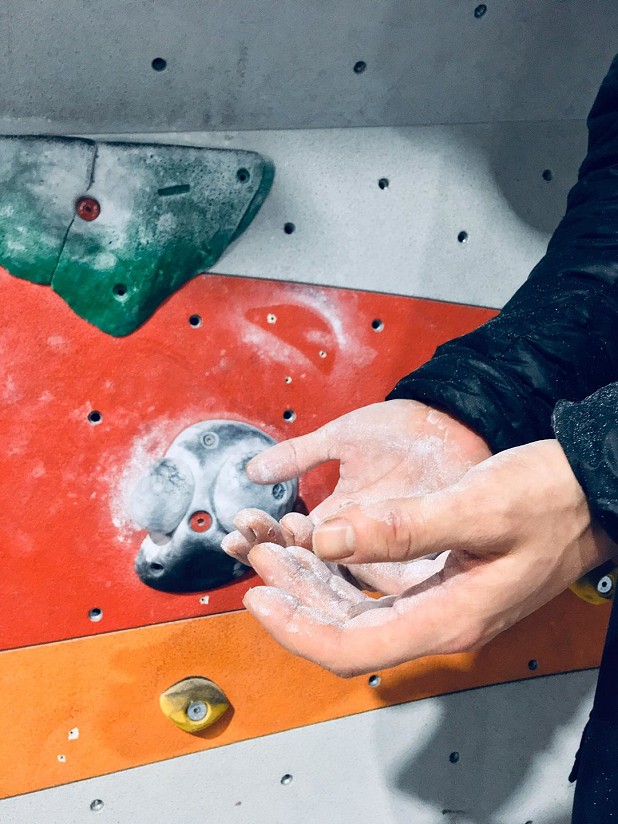
Throughout the pandemic, there has been much talk but little conclusive scientific evidence that liquid chalk is effective in denaturing the SARS-CoV-2 virus. Although liquid chalk contains alcohol, the typical consistency is around 40-50%. Studies suggest that the most effective concentration for IPA alcohol-based disinfectants is around 60-95%, with varying water concentrations making up the remainder. Water slows the evaporation of the alcohol, thereby ensuring longer contact time with virus particles and increasing the chances of denaturing them, but traditional liquid chalk has a lower water concentration due to the addition of magnesium carbonate (chalk), which absorbs the water. Moreover, the product is likely to be reapplied to dirty hands between climbs, which hampers disinfection.
In response to this question and following some suggestions from the medical world, liquid chalk brands are upping the IPA content in their products to increase the chances of effective disinfection. An Italian liquid chalk product named Doc Mag Plus has recently been developed with 72% IPA and additional chlorhexidine, a common medical disinfectant and antiseptic. A study suggests that the product 'showed a hygienising capacity similar to a gel containing 70% ethanol taken as a reference sample.' US climbing chalk brand FrictionLabs have developed an 80% alcohol liquid chalk, and Rhino Skin - used by many climbers for skin repair - have produced a new 75% IPA hand sanitiser. One potentially more beneficial aspect of liquid chalk could be the reduction in airborne chalk dust, which provides a potential surface for transporting virus particles through the air to be breathed in by climbers.
As has been the golden rule throughout the crisis, thorough washing with soap and water at the end of a session - while not touching your face in the meantime - is likely the safest bet.
The Global Picture
Red, Amber, Yellow - Traffic Management
The German chain Boulderwelt, which boasts five branches across the country, were able to open just two of their walls - in Frankfurt and Dortmund - from Monday 11th May due to differing federal state laws. An existing traffic light system linked to cash register software and visible on their website has been adapted to monitor lower numbers and inform customers about the volume of visitors in the centres online, with some hints as to when the wall might be quieter: weekdays, weekend evenings and when it's sunny.
'We have now set a "Corona Limit" which is below the normal "full" quota and an admission stop can occur early,' Nadia Hoffmann of Boulderwelt Frankfurt says. 'Currently we have clear distance rules of 1.5m (the German standard) and strict requirements in terms of hygiene.'
So far, the centre hasn't been overwhelmed. 'Many boulderers visited us straight away on the first day. It's noticeable that overall there is less going on than usual, as many people are still very careful and for the time being do without certain things', Nadia comments. 'We have not yet reached our limit and there is still some buffer left.' Additionally, many customers are more flexible time-wise due to limited work hours or home working and can climb during the day instead of in the evening. 'That is of course great at the moment, because it makes the climbers better distributed,' she adds.
Despite the strange situation, the atmosphere is convivial. 'Everyone is having fun and is very happy that they can do their sport again,' says Nadia. 'What's more, our community is very careful and everyone is nice to each other, complying with the distance and hygiene regulations and is very understanding. We are proud of our community and hope that we can open our three Bavarian walls in June.'
Inside/Out
Some countries have prioritised the opening of outdoor sports facilities over indoor sports spaces, which has benefited continental climbing walls with outdoor structures. In the Netherlands, one wall tried to circumvent the indoor leisure facility closure by opening its roof and part of the side wall, but was promptly shut down again by authorities and won't reopen until 1 September. The Dutch Climbing and Mountaineering Association (NKBV) consider it unacceptable that climbing walls should remain closed for so long. 'Climbing is not a contact sport and not a team sport,' director NKBV Robin Baks told the newspaper Parool, stressing that social distancing is practicable in climbing walls. 'Look at the countries around us, the climbing halls are opening much earlier.'
In Austria, outdoor individual sports facilities were permitted to re-open on May 1st. 'Our outdoor wall is an optimal solution, with public toilets accessible from the outside and entry can be paid at a cash desk outside,' says Andy Knabl, manager of Kletterzentrum Imst in Tirol. 'We currently let 44 people into the outdoor area at the same time and open from 8 a.m. to 11 p.m. during the week and from 8 a.m. to 8 p.m. at weekends, so they are well distributed!'
General hygiene measures have to be followed by climbers, including washing hands before and after their session and keeping 2 metres apart. While the indoor section of the centre remains closed until the end of May at least, Andy was able to open his shop on 14 April, where customers must wear a mask, and can open the café from 15 May, where 4 people can sit at a table without a mask, but must wear one when walking around.
Andy remarks that climbers are happy to restart and follow the new rules so far. 'I guess the mood is the same everywhere, but everything is very positively received!' he says. 'We have not made any additional demands from our customers and we have also looked after both our climbers and our future as a business. It should be possible to run a wall despite the circumstances and above all you should be able to enjoy it! Many re-opening suggestions I have heard don't make sense and are not forward-thinking.'
Beyond Europe
In the USA, decisions on re-opening are starting to be made on a local and state level amid a growing national sense of lockdown compliance fatigue. Centres in Tennessee, Oklahoma, Missouri and Georgia were the first to welcome customers and set their own COVID-19 mitigation measures, involving so-called 'soft' openings with restrictions including members-only and online pre-booking of time slots. Some walls are making staff temperature checks and/or face masks mandatory, but most are asking for a basic minimum of pre-session hand washing and removal or disinfection of outdoor shoes by customers upon entry. Routes and boulders are being set - using additional PPE - to optimise distancing, with space between lines and problems or by using rotating colour circuits each day, while rental of equipment is limited and climbers have been asked to stick to one partner for the whole session in some walls. To assist contact tracing and isolation planning in the case of an outbreak linked to the wall, fixed staff pairings forming 'social bubbles' have been introduced in Adrenaline Climbing, Georgia.
In North America, ropes are generally rented by climbers for insurance purposes, and may need to be 'quarantined' along with other rental gear after use for a period of days - especially due to the common habit of holding the rope in the mouth while clipping, which some walls are advising customers to avoid.
Kimanda Jarzebiak of The Boulders Climbing Gym in Central Saanich (BC), Canada is currently knee-deep in protocols and planning while awaiting a go-ahead from authorities. 'The good news is that we are quite familiar with risk management, but mostly related to physics and human behaviour, not biology,' she says. 'A plan is evolving and it will be multi-layered, recognising that the most effective way to avoid transmission is physical distance. Cleaning protocols, and encouragement of personal hygiene, will be critical, as well as realising that bouldering will be easier to manage than birthday parties.' British Columbia has charted its own course during COVID-19. 'The "lockdown" was a soft one, and the re-opening plan is a little vague as well, as much depends on sectors and businesses within to show they have a plan. Once ours is finalised, we will be sharing it,' Kimanda says.
'It's one thing to think you're doing the right thing, but it means nothing if people don't feel safe,' she adds. 'We want to open, but as always, safety comes first.'
Down under, a nationwide reopening of leisure facilities in New Zealand - where the outbreak has been far smaller in scale - became possible last week, while walls in Western Australia are also moving towards re-opening this week. Meanwhile, South Africa has put a proposal in place for re-opening in the near future.
Feeling the pinch
During closure, most walls froze memberships and started opt-in or opt-out schemes for customers who wanted to continue or stop paying, or encouraged people to buy punch-cards and gift vouchers. Prior to lockdown, many businesses were using membership money to keep staff on before the Government furlough scheme kicked in. While the customers were away, the time has been used for refurbishment, cleaning, routesetting and fielding customer opinion on a return to climbing while keeping them informed and connected through social media.
For newer wall businesses, COVID-19 has suppressed any progress made. 'For us the timing could not have been worse really,' says Chris Whitehead, owner of Freeklime in Huddersfield. 'When we were forced to shut we had five months of trading under our belts and we were just starting to hit our stride. So not only is there a huge financial loss, but the loss of momentum is equally important moving forward.' While grants, the furlough scheme and high membership retention have helped to some extent, new operators may have a tougher time managing cash flow with normal operating expenses and diminished revenue. 'On the flip side, given we are a very small business and team, our cash burn may be smaller than larger, multi-site operators,' Chris continues. 'As with any industry, there will undoubtedly be buy-out or acquisition opportunities for the industry's larger operators.'
'The ABC have been great in providing an opportunity to reach out to other, more experienced wall owners to share ideas and develop best practices on re-opening,' he adds.
But even established, multi-site chains are not immune to the financial strain. 'The loss in revenue is catastrophic to us,' says Dave Douglas of Awesome Walls. 'Even after twenty years in the trade, nothing can prepare you for something like this. We're very lucky that we own two of our buildings and have a good working relationship with our landlords on the other two and negotiated half rent on Stockport and Stoke, but we will need to repay the other half when we reopen which may be a problem!' Outside support has been tricky to navigate, Dave explains. 'We have applied for all the government grants and loans available, we have received some but not all. While the local authorities are doing a great job, it sometimes feels like the right hand doesn't know what the left is doing!'
In Japan, where the outbreak has hit later and government support for businesses has been extremely limited, the situation is even more critical for the country's 600+ climbing centres. Enforced shut-down and re-opening possibilities vary between prefectures and some walls face a Catch 22 scenario: choose to shut down and receive no or limited support, or risk remaining open in an uncertain situation, reluctantly. The Japanese Climbing Gym Association (JCGA) started a petition to lobby the government for 80% rent subsidisation for climbing walls in prefectures where sports facilities have been asked to close, while a public crowdfunding campaign is also underway. Some walls in Japan have already gone under due to the crisis. A statement from the association paints a sobering picture:
'If this situation is prolonged, many climbing gyms will go out of business or go bankrupt. However, even if we reopen now, we will not be able to attract as many customers as we would like, and the gym's image will be damaged by this, and we will have to pay more attention to the quality of our services. The risk of damaging the image of the entire climbing gym industry is inevitable.'
Indeed, it's a major blow for wall owners in the future Olympic host country, who would have anticipated a boom in the indoor climbing scene on the back of its big debut in Tokyo 2020 - already postponed to 2021 by COVID-19, while its fate remains uncertain. Lacking government assistance, the JCGA has appealed for solidarity from its members. 'If gyms work together for a common goal, we will gain support from the climbing community - our users - and the understanding of the public, and momentum to protest against the government will be generated.'
Although drawing positives from this overall situation would seem unlikely, Nathan Steele of Adrenaline Climbing in Suwanee, USA noticed an unexpected upside post-lockdown of attracting new climbers. 'What was most fascinating was that we saw folk who were not climbers, people who'd never even climbed before, but who wanted to come to the climbing gym to exercise,' he commented in a CWA Community Call. 'Their normal workout facility may have been closed at that time and they were looking for a new workout.' An additional benefit has arisen from the increased focus on individual interactions between staff and customers. 'There's been lots of 1-on-1 time,' Nathan explained in the call. 'People are anxious to socialise from a distance.'
Overall, the support for walls globally by the community has been overwhelming. In response to closures, climbers have assisted walls by keeping up payments. 'We've had a huge number of people continue to pay their monthly memberships which is both amazingly generous and a massive help,' Rich Emerson of The Climbing Academy said. 'As soon as we come out the other side, we just need everyone to come back into the walls and to start spending again.'
***
Whenever the UK and other countries get the go-ahead for re-opening, the onus will fall on customers to be patient and respectful of new rules and regulations in order to minimise the risks for themselves and others. Indoor climbing won't be appealing to everyone initially, but with continued support from customers, businesses should be able to stay afloat. Follow your local wall(s) on social media for updates. Once they re-open, keep clean, keep calm and climb on.
- SKILLS: Top Tips for Learning to Sport Climb Outdoors 22 Apr
- INTERVIEW: Albert Ok - The Speed Climbing Coach with a Global Athlete Team 17 Apr
- SKILLS: Top 10 Tips for Making the Move from Indoor to Outdoor Bouldering 24 Jan
- ARTICLE: International Mountain Day 2023 - Mountains & Climate Science at COP28 11 Dec, 2023
- ARTICLE: Did Downclimbing Apes help Evolve our Ultra-Mobile Human Arms? 5 Dec, 2023
- ARTICLE: Dàna - Scotland's Wild Places: Scottish Climbing on the BBC 10 Nov, 2023
- INTERVIEW: Loki's Mischief: Leo Houlding on his Return to Mount Asgard 23 Oct, 2023
- INTERVIEW: BMC CEO Paul Davies on GB Climbing 24 Aug, 2023
- ARTICLE: Paris 2024 Olympic Games: Sport Climbing Qualification and Scoring Explainer 26 Jul, 2023
- INTERVIEW: Malcolm Bass on Life after Stroke 8 Jun, 2023



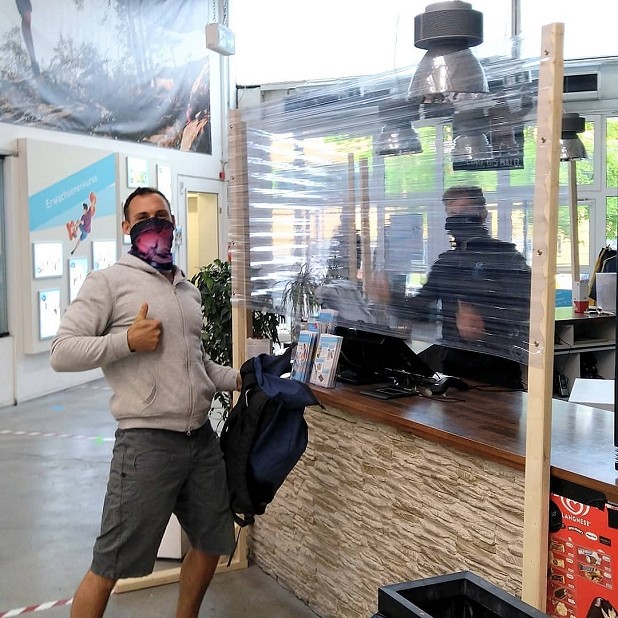
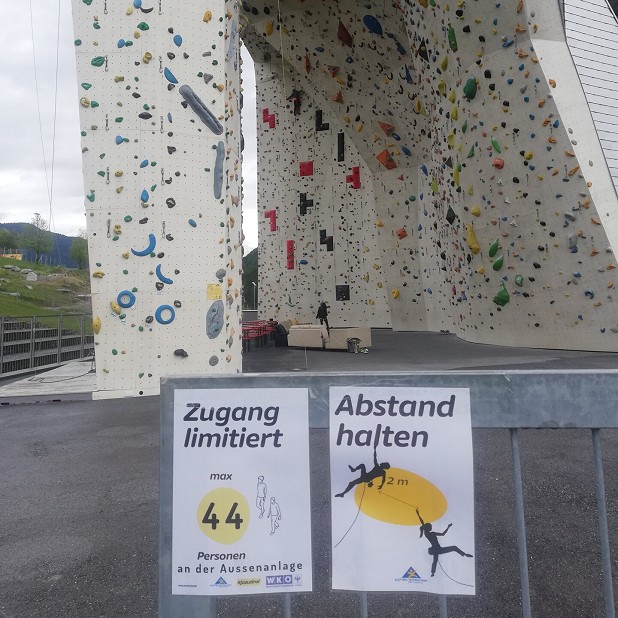
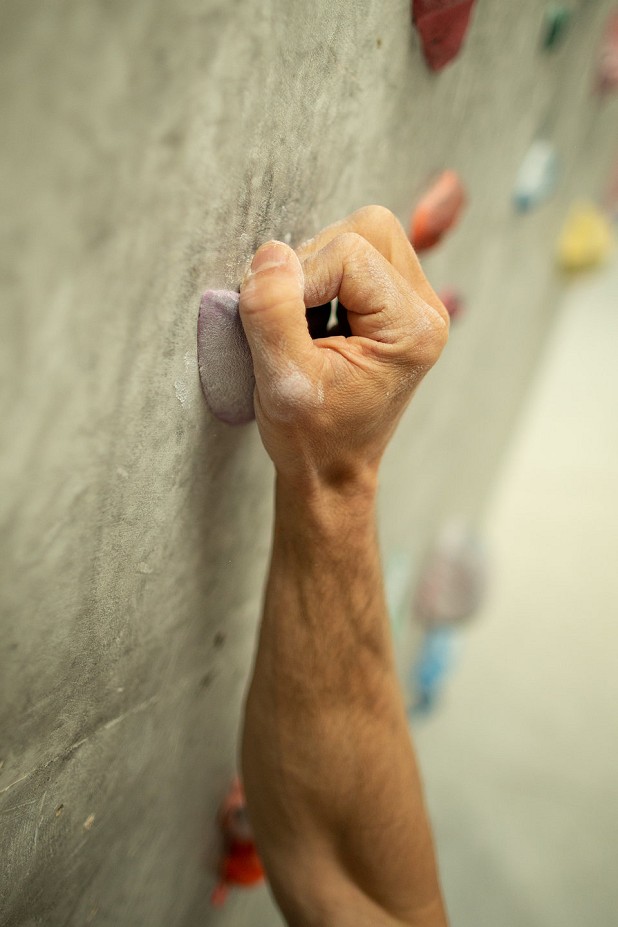

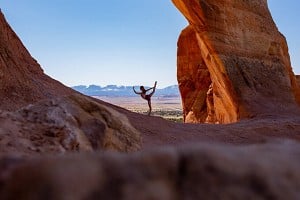

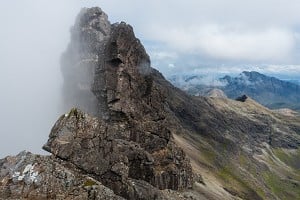







Comments
Great article.
Ocean Rower.
This might interest you.
Sav
Interesting and thought provoking. I hope the walls can ride out the storm. A big risk must be foreclosure on buildings or loss of equipment.
Brucey bonus,for me, is that I learned a new world class bouldering facility had opened in Huddersfield, looking forward to giving it a go when it's able to re-open.
We have so many bouldering walls in London and I would be happy if just a few reopened at the start.
I think its true that indoor climbing walls are one of the most likely places for transmission to occur as with fitness gyms. The idea of having routes spread out as such to limit the close proximity to others is a good one. But the fact that every handhold on a route is touched by countless other people is a concern. Im not sure whether the fact there is a chalk barrier between a climbers hand and the hold is a limit to transmission it would be interesting to see a study. I purposely avoid touching gates and handrails when out for this reason. I'll definitely be visiting the more quieter crags. I just hope the indoor climbing scene will bounce back as strong as ever.
Crag wise. When I want to Burbage North with Offwidth and Buxton Coffee Lover the whole Burbage Valley was really quiet - I think we were the only people there.
I do hope the indoor climbing scene will bounce back stronger then ever.
I think they are some studies on the disinfectant properties of different Liquid Chalks
Sav